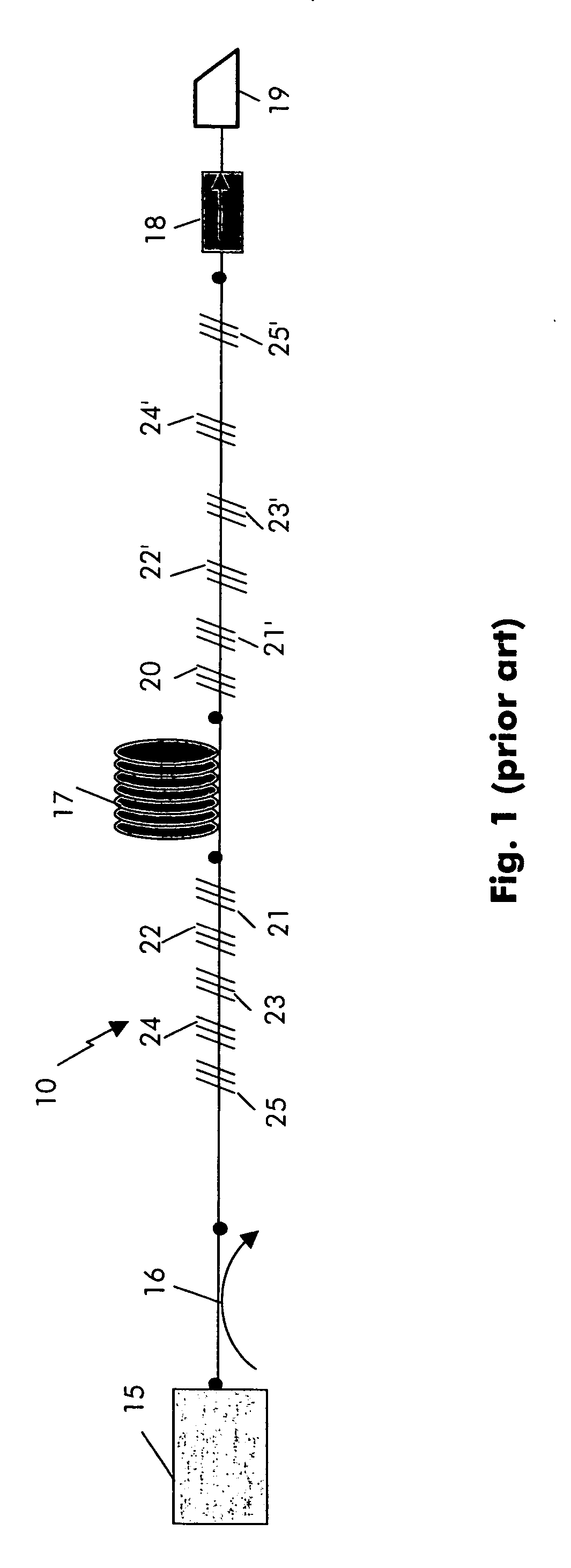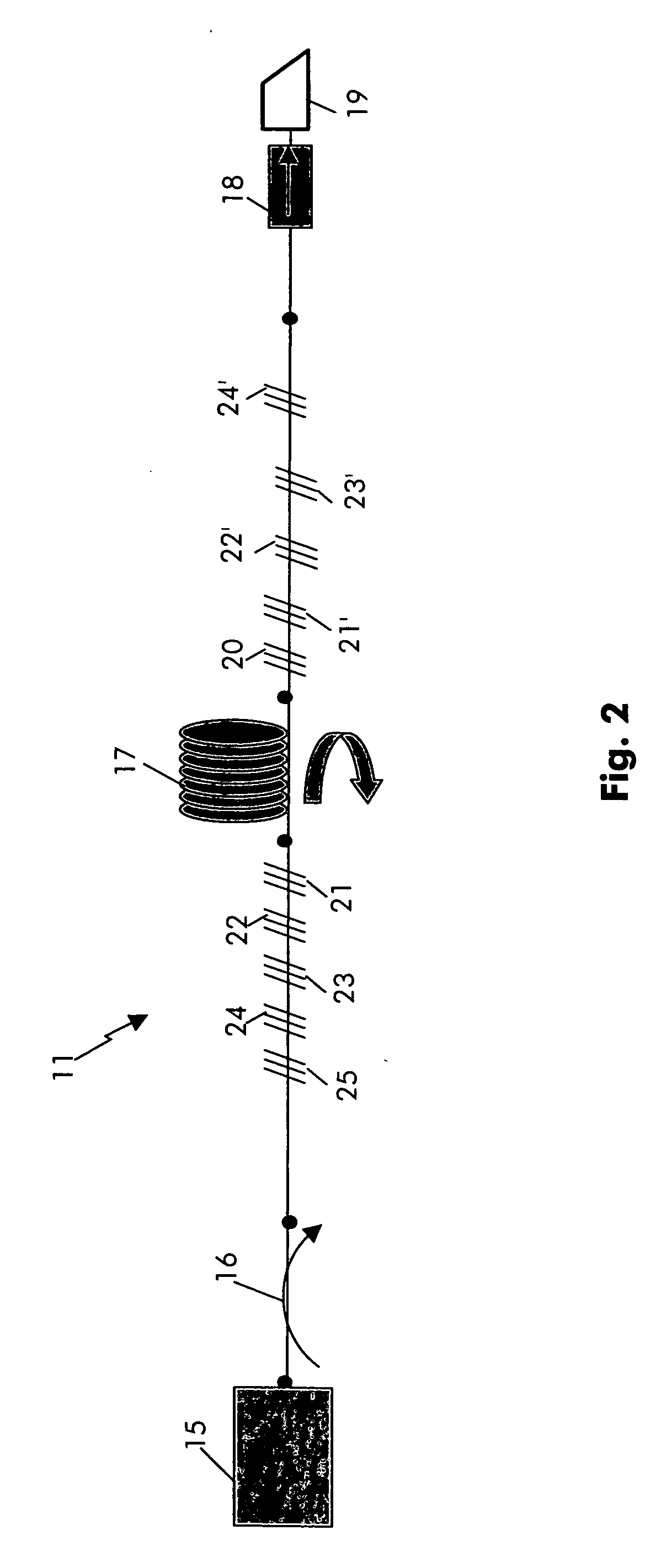Raman laser with improved output power and lower sensitivity to the output coupler reflectivity
a laser and output coupler technology, applied in the field oframan lasers, can solve the problems of raman lasers with so many reflectors that are difficult to manufacture, and the strength and quality of transmitted optical signals decrease, and the effect of reducing the sensitivity of the output coupler reflectivity
- Summary
- Abstract
- Description
- Claims
- Application Information
AI Technical Summary
Benefits of technology
Problems solved by technology
Method used
Image
Examples
Embodiment Construction
[0019]FIG. 2 shows a Raman laser 11 according to the invention. Such a Raman laser 11 comprises some lengths of optical fiber used as Raman fiber 17. That Raman fiber 17 is surrounded on both part by a number of reflectors (ri, r′i). At the present example described in FIG. 2 are five reflectors 21, 22, . . . , 25 on the input side of the Raman laser 11 and five reflectors 20, 21′, . . . , 24′ on its output side. All these reflectors 20, 21, 21′, . . . , 24, 24′, 25, are preferably made by some fiber Bragg gratings structured on said optical fiber. But other kind of reflectors could be conceivable.
[0020] The Raman laser 11 is coupled on its input side via a coupler 16 with a pump source 15. This pump source will provide initial pump radiation at wavelength λPO into the Raman laser 11. On the output side of the Raman laser 11 is put an isolator 18 to protect it from any radiation coming from outside via its output. That output is characterized by a tilled cleaved end face 19 such to...
PUM
 Login to View More
Login to View More Abstract
Description
Claims
Application Information
 Login to View More
Login to View More - R&D
- Intellectual Property
- Life Sciences
- Materials
- Tech Scout
- Unparalleled Data Quality
- Higher Quality Content
- 60% Fewer Hallucinations
Browse by: Latest US Patents, China's latest patents, Technical Efficacy Thesaurus, Application Domain, Technology Topic, Popular Technical Reports.
© 2025 PatSnap. All rights reserved.Legal|Privacy policy|Modern Slavery Act Transparency Statement|Sitemap|About US| Contact US: help@patsnap.com



